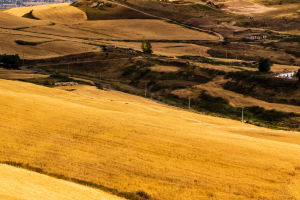Wind energy is a form of renewable energy that converts the kinetic energy of the wind into electricity. It is a clean and sustainable alternative to traditional energy sources such as coal, oil, and gas.
The process involves using wind turbines that have rotor blades that spin as the wind blows, which in turn powers a generator to produce electricity.
The wind turbines themselves consist of several components. The tower is a tall structure that supports the other components and raises the rotor blades to a high altitude where the wind is stronger and more consistent.
The nacelle is located at the top of the tower and houses the gearbox, generator, and other electrical components that are necessary for producing and regulating the electricity. The rotor blades are connected to the nacelle and spin in response to the wind.
Finally, the foundation holds the tower in place and provides stability.
One of the main advantages of wind energy is that it is a clean source of energy that does not produce any harmful emissions or pollutants. Unlike traditional energy sources that rely on fossil fuels, wind energy does not produce greenhouse gases or contribute to climate change.
This makes it an ideal solution for reducing carbon emissions and mitigating the effects of global warming.
Another advantage of wind energy is that it is a renewable energy source. Wind is a natural resource that is available everywhere, and it can be harnessed to produce electricity without depleting it.
Unlike fossil fuels which are finite and will eventually run out, wind energy is a sustainable and infinite source of energy.
Wind energy is also very cost-effective. Once the wind turbine is installed, the energy it produces is essentially free, and the cost of maintaining the turbine is relatively low.
In many cases, wind energy is even cheaper than fossil fuels, making it a viable option for powering homes, businesses, and even entire cities.
Despite these advantages, wind energy also has some drawbacks. One of the biggest challenges is that wind energy is highly dependent on the weather. Wind speeds can vary greatly from one day to the next, and if the wind is too weak or too strong, the wind turbine may not be able to produce electricity.
This means that wind energy is not always reliable, and other sources of energy may need to be used to supplement it.
Another disadvantage of wind energy is that it can be visually intrusive. Wind turbines are typically large and can be seen from a distance, which can be an eyesore for some people. This can be particularly problematic in areas where the landscape is particularly beautiful or where there are strict zoning laws.
Finally, wind energy can also have an impact on wildlife. Birds and bats can be killed or injured by the rotating blades of wind turbines, which can disrupt local ecosystems. However, these impacts can be mitigated through careful site selection and the use of measures such as radar systems and bird deterrents.
Despite these challenges, wind energy remains an important and viable source of renewable energy. As technology continues to improve and costs continue to decline, wind energy will likely play an increasingly important role in meeting our energy needs in a sustainable and environmentally friendly way.

